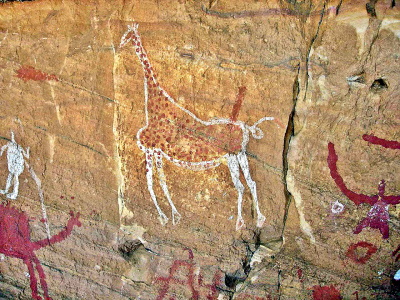Tadrart Acacus

The Rock-Art Sites of Tadrart Acacus hold thousands of cave paintings that reflect the way of life of different Saharan civilizations.
The mountain massif of Tadrart Acacus is located in the desert area of western Libya. The paintings and engravings were done on its rock walls and in rock shelters. They date from 12,000 BCE to 100 CE and reflect cultural and natural changes in the area. They depict animals such as giraffes, elephants, ostriches and camels, but also men and horses.
Community Perspective: it borders the very similar Algerian WHS Tassili n'Ajjer, and according to Zoë you can hop across to set foot in both parts.
Map of Tadrart Acacus
Community Reviews
Zoë Sheng
Chinese-Canadian - 10-Apr-22 -

One thing I want to make clear: Tadrart Acasus and Tassili n'Ajjer, the eastern section also called Tadrart, are hardly distinguishable. If you visit the Algerian side you should only have a reason to visit Libya due to bordered defined by the UNESCO committee. The rock art is on both sides but I feel the countries don't want to cooperate and Algeria is limiting the site to what it is now, the western section of Tassili n'Ajjer NP. At the moment the Libyan land border is officially closed so you need to hike over the Tadrart plateau to get into Libya only to claim you have set foot into it, something I can't say is worth it. Or come from the Libyan side which involves a long, long drive and then the park may still be officially closed anyway.
Overall I find that both sides of the border are rather crappy for world heritage but get high ratings because the entire tour involves an adventure; trekking, camping, Touareg hospitaly, nomad camps, rock formations, sand dunes that keep going, magnificent sunsets and sunrises, and of course the whole remoteness. However, that should not really count for the site - that's just a vacation tagged on.
While I do rate the art higher than most I have seen ranging over a huge time period, and it's interesting to see different animals that no longer call it their environment such as elephants, it's just not the amazing part of the trip you do it for. One thing that you see more are test art, drawings that ended up as failures which you often find missing from sites and wonder how they only left the "good" art on the walls. Here you also find half finished drawings and overwritten, perhaps on purpose or by mistake.
Community Rating
Site Info
Site History
2016 In Danger
Simultaneously with the four other World Heritage sites of Libya "because of damage caused by the conflict affecting the country and the threat of further damage it poses".
1985 Inscribed
1984 Deferred
At request of Libya
Site Links
Unesco Website
Official Website
In the News
Connections
The site has 13 connections
Ecology
Geography
History
Human Activity
Timeline
Trivia
World Heritage Process
Visitors
9 Community Members have visited.
The Plaque
No plaque has been identified yet for this site.